Swimwear Industry Rides Its Next Wave

Swimsuit season has arrived. And it might be here to stay.
Scroll through Instagram and one is left to believe that consumers are wearing nothing more than bathing suits and beachwear these days. There’s the seemingly never-ending list of new brands popping up each day, many of them offering special features. (Built-in sun protection, gender-neutral options and sustainable fabrics, to name a few.) Mix in consumers antsy to travel again to warm weather locations after being stuck at home for more than a year and it’s the perfect backdrop for the swimwear market to grow — and keep on growing.
More from WWD
“It’s never stopping,” Natalija Dedic Stojanovic, cofounder and creative director of Paraiso Miami Beach, the annual swimwear and resort wear trade show, told WWD.
She was referring to the overabundance of new swimwear brands set to show at next month’s Miami Swim Week, as well as the global swimwear market, which was worth more than $16 billion in 2020 and is expected to grow to about $21.4 billion by 2025, according to market research firm Euromonitor International. Statista is anticipating the market will be even bigger, as much as $29.1 billion by 2025.
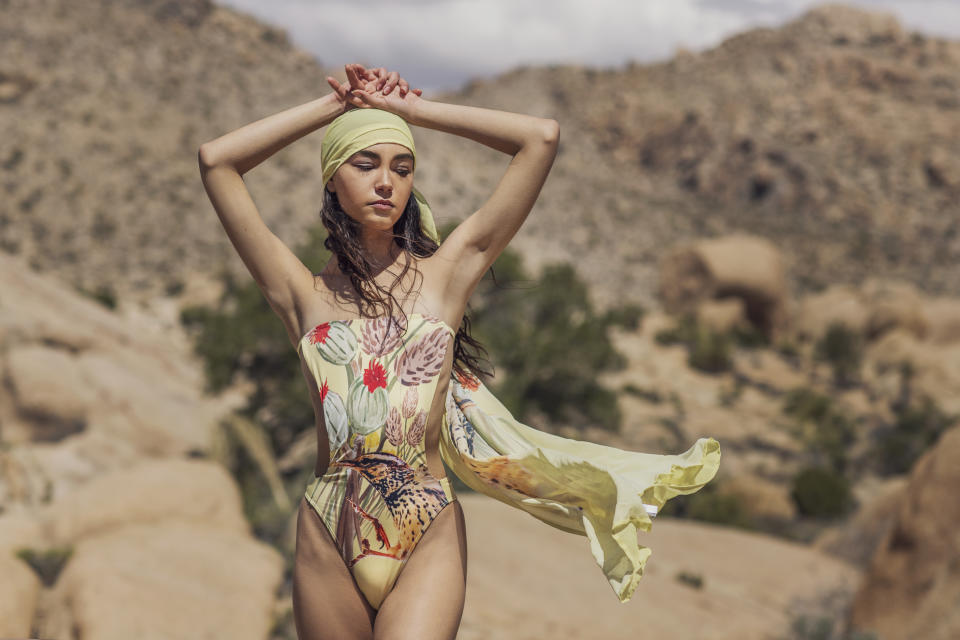
Courtesy Photo Haylee Barsky
Even the pandemic didn’t stop consumers from buying swimwear, even though travel came to a near halt. Many were eager for a little escapist fashion — even if the escape was to their backyard — and engaged in some retail therapy by way of swimwear and resort wear as a way to cope with the stress of quarantine. Several companies and brands reported record swimwear sales in 2020 as a result, with warm weather locales, such as Florida, especially lucrative.
Now, as vaccines continue to roll out and masks are coming off, shoppers are excited to try on some new swimwear threads. In fact, the U.S. swimwear market, which includes both men’s and women’s swimwear, grew 19 percent from January to May, compared with the same time in 2019, pre-pandemic, according to the NPD Group’s Consumer Tracking Service, with the total U.S. market valued at roughly $2.7 billion.
Even across the pond, where lockdowns have been slow to lift in England and Europe, online swimwear searches in the U.K. surged 114 percent between April and May, according to digital marketing agency Media Vision’s Digital Demand Tracker.
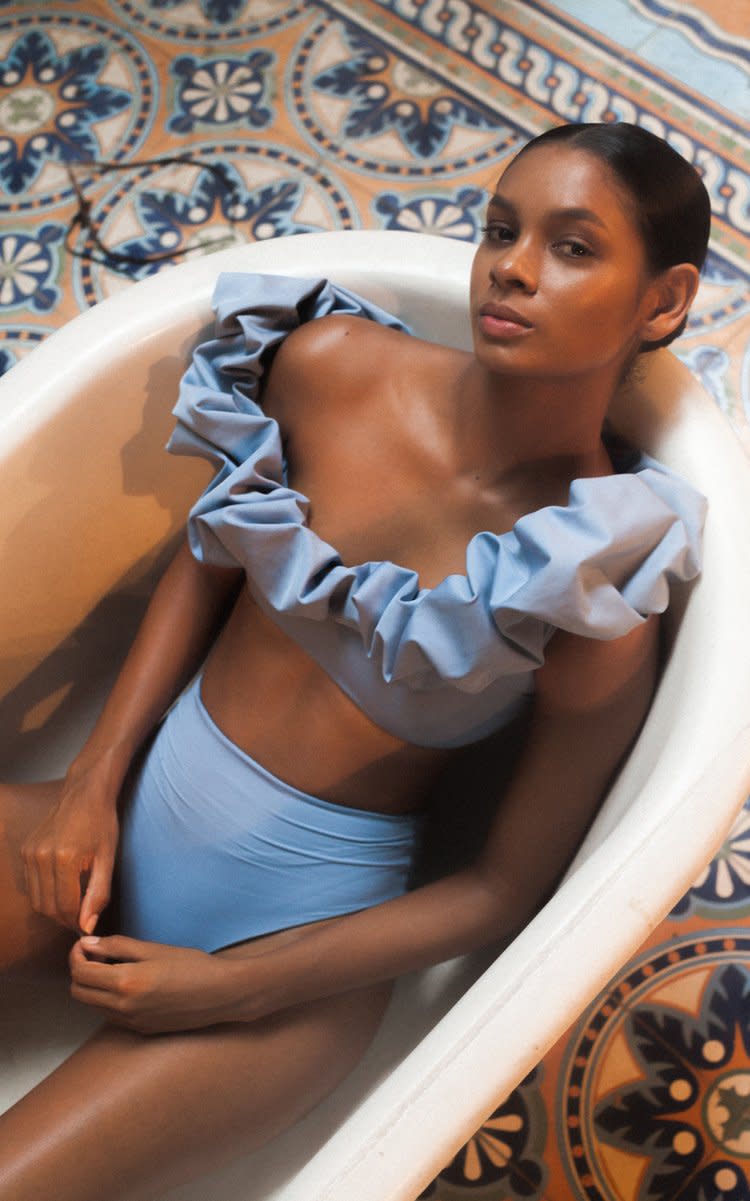
Courtesy Photo Maygel Coronel
“When you think about it, you combined that pent-up travel demand with the desire for something new and swimwear has just really been benefiting from that,” said Kristen Classi-Zummo, director of apparel market insights for NPD. “It’s going on that long-awaited vacation — whether it’s with friends or with family — and I think she just wants to update her summer swim wardrobe.”
Most of the recent gains Stateside come from women’s swimwear and beachwear (about 95 percent), but Classi-Zummo said men’s is growing, too. Also on the rise is the average unit retail, or average selling price, of swimsuits — up 5 percent in 2021, compared with 2019.
“So we know that consumers are getting ready for that vacation and they’re spending a little bit more,” Classi-Zummo said.
Nor is it just swimwear. Sales of beachwear, beach accessories and sportswear, specifically for water sports, are also up.
“She wants to look good from head to toe, so she’s investing in a swimsuit and she’s investing in a cover-up for it,” Classi-Zummo explained. “In years past, women would typically throw on a pair of shorts or shirt. But now she wants to look styled; she wants to look good for this vacation that she missed out on last year.
“And not only do they want to refresh and update what’s in the closet, but we know a lot of consumers are a different size than they were pre-pandemic,” she added.
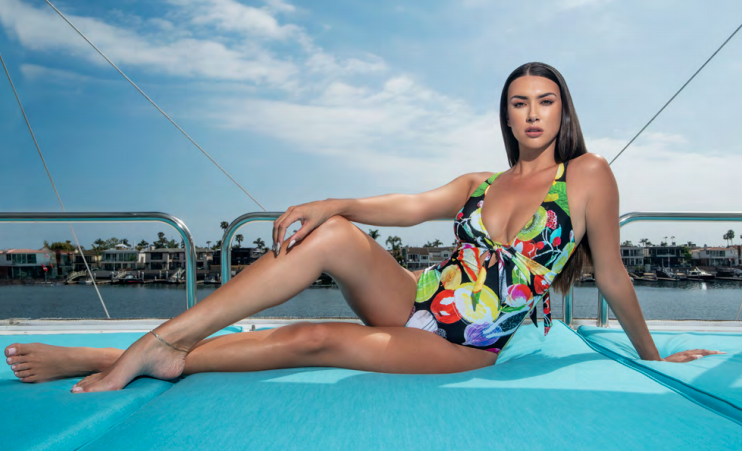
Courtesy Photo
Either way, shoppers are hot for swimwear right now and retailers are eager to capitalize on the moment. Examples can be found throughout the fashion industry.
Draper James and Lands’ End, Kathy Ireland and Los Angeles-based Trunkettes, Tanya Taylor and Summersalt, and French label Eres and Bonpoint all released swimwear collaborations during quarantine. Adam Selman, Bethenny Frankel and Beyonce’s Ivy Park all expanded into the category. Lands’ End, American Eagle Outfitters’ Aerie, Target, Versace and Vilebrequin, which is owned by G-lll Apparel Group Ltd., all called out swimwear as a growth driver in the last year.
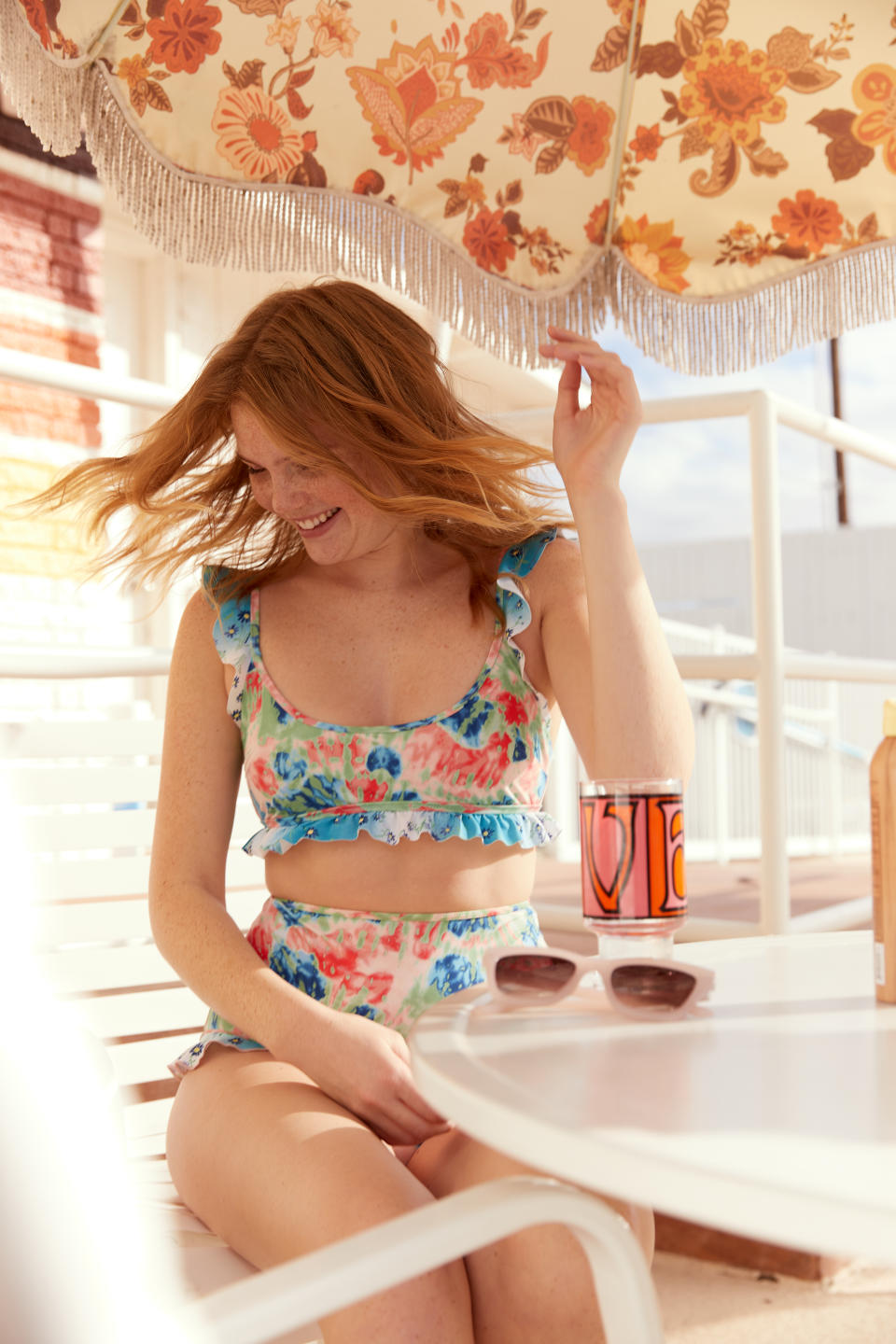
Courtesy Photo
“We sold swim like it was our best swim year ever; the margins were the highest ever,” Jennifer Foyle, chief creative officer of American Eagle Outfitters and global brand president of Aerie, told analysts during the company’s May conference call. “Who would have thought? I still don’t think we’re fully ready for spring break. And I have faith that next year we’re going to even have a better spring break because people will be vaccinated.”
Victoria’s Secret also jumped back into the swimwear market earlier this year, a category that was once valued as a $525 million business.
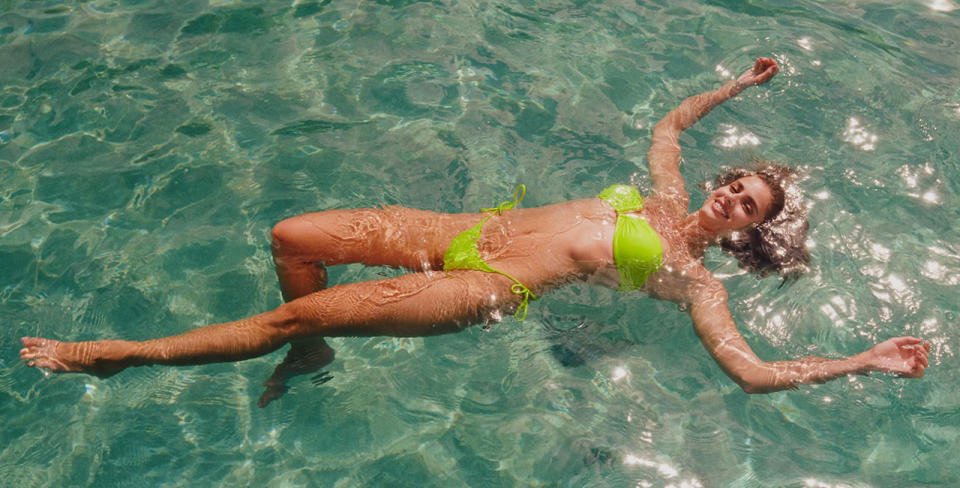
Courtesy Photo
“What makes us so excited about being back in swim is seeing how happy our customers are that we’re back in swim online and in select stores,” said Martin Waters, chief executive officer of Victoria’s Secret. “It’s clear they were waiting for us and their response continues to be enthusiastic, especially to fashion, print and novelty, as well as towels and cover-ups.”
But while Victoria’s Secret is the U.S. market share leader in lingerie, there’s still no clear leader in swimwear — in either men’s or women’s — leaving the door open for smaller brands and start-ups to break in and take share.
Brands like Onia and Andie Swim. Innerwear brands, including Cuup, MeUndies and Cosabella, are also diving into the swimwear pool this year. La Perla, Agent Provocateur and Adore Me have long offered swimwear, but are making more of an effort to promote the category. Activewear brand Shefit is launching swimwear in 2022. Meanwhile, other swimwear brands continue to expand with full lifestyle assortments. Frankies Bikinis most recently added footwear, apparel and accessories, such as cell phone cases, to its lineup, while swimwear brand Solid & Striped expanded with activewear and ready-to-wear.
Cosabella creative director and co-CEO Guido Campello described the recent requests for swimwear as “overwhelming.”
“Swimwear has been the number-one search term on our site for well over a year now,” he said. “We saw an incredible demand in the market for swimwear from our customers — even higher for our curvy DD+ sizing.”
Consumers also have the option of shopping for performance swimwear at places such as Speedo, Lululemon and Adidas, or buying fashion bathing suits at big-box retailers and indie boutiques. On the other side of the spectrum are luxury swimwear brands, such as LaQuan Smith Swimwear, Eres, Robin Piccone, Dior, Marysia and Araks, to name a few, offering swimwear with triple-digit price tags.
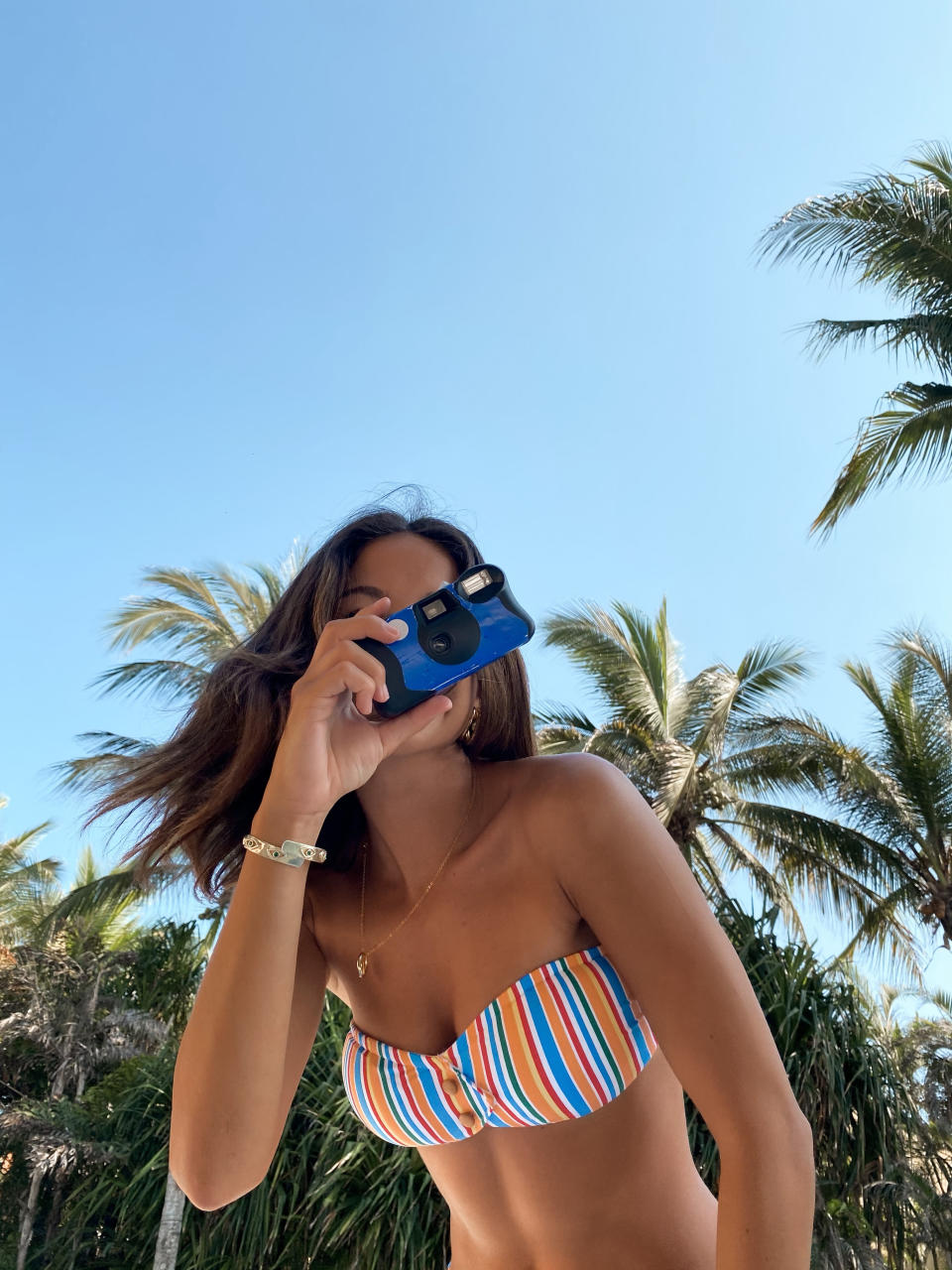
Courtesy Photo
There’s also a whole list of models and influencers who have created their own brands, such as Devon Windsor, Ashley Graham, Tara Lynn and Danielle Bernstein. Or celebrities who flaunt their favorite suits on Instagram, causing styles to sell out in hours. Shares of American Eagle Outfitters rose about 5 percent earlier this month after Brooke Shields posted a photo of herself and her daughters on Instagram in matching swimsuits, tagging Aerie.
“Social media is the thing that gave this industry a push and a platform to grow,” Dedic Stojanovic said. After all, it’s always warm somewhere in the world. And with the constant pressure to show off new looks, swimwear has not missed the boat.
All of this may seem overwhelming for consumers shopping for the one bathing suit that will make them look good while nearly naked. But Dedic Stojanovic said the increase in options is indicative of the fashion industry’s newfound push for inclusivity.
“We’re all different and picky about our swimsuits, because our bodies are all different,” she said. “With clothing you can cover it. But the swimsuit really has to be fitted. That’s why we need so many different styles, because we’re all so different and differently built.”
Many brands, such as Miami-based start-up Curvy Beach and fashion e-commerce site Shein, have added larger models showing off the latest swimwear, while labels like Chromat and TomboyX offer gender-neutral swimwear options.
“I think gender-neutral is something that will be showing up more and more as its own category,” Dedic Stojanovic said.
Consumers are also looking for swimwear options that they can wear from beach to street, any time of the day.
“This idea of swimwear being more than just swimwear, of being taken beyond the beach, has been something we’ve really seen our customers gravitate toward and respond well to,” said Tabacaru Swim founder and creative director Stefana Tabacaru. “We have so many customers who wear our swimsuits all day. They can take it from the beach to lunch to a night out, without needing to ruin their day by going home.”
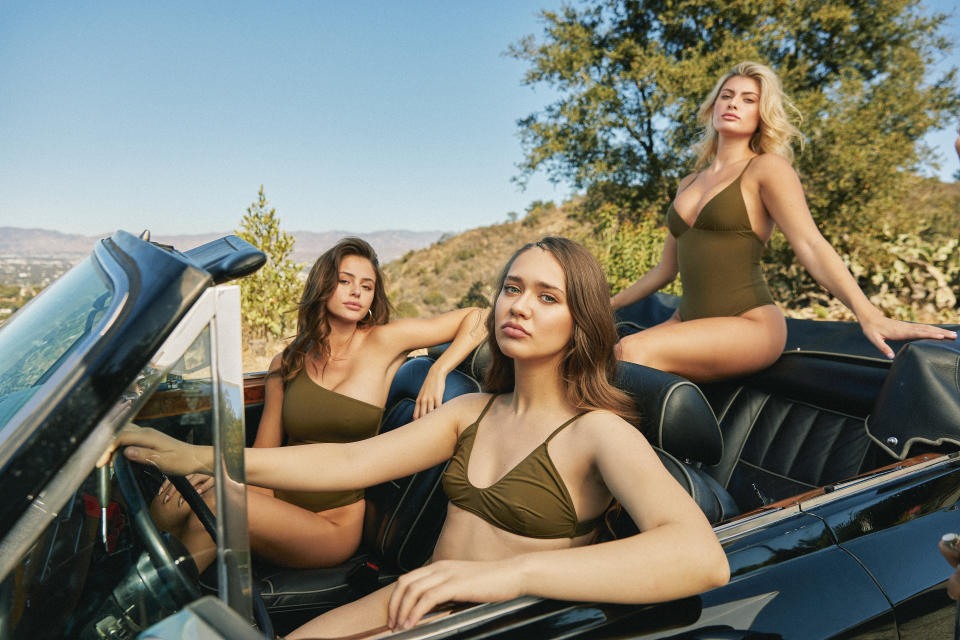
Courtesy Photo
Frankies Bikinis offers swim skirts that double as dresses when out of the water.
“I’m noticing people are taking more risks with their swimwear, which has been so much fun for me as a designer,” said Francesca Aiello, Frankies Bikinis founder and creative director. “Our customers are open to experimenting with funky, psychedelic prints, new fabrics, cutouts and styles that are just different than anything else you are seeing on the market. What I have been able to do is play with new fabrics like our swim safe glitter, terry cloth and satin.”
But there are other reasons why the swimwear industry is growing so rapidly. Like consumers’ desire for sustainable products, including swimwear; new innovations, and a lifestyle that’s centered around wellness and water sports.
“We know innovation drives purchasing and consumers love these special features, whether it’s fast-drying or sun protection,” Classi-Zummo said. “It’s something we’re seeing brands offer a lot more of and it’s going a long way with the consumer.”
Examples include New York-based indie brand Seventy One Swim, which offers reversible swimwear; bathing suits with quick-drying fabrics from Hermoza and REI, and built-in sun and chlorine protection at Kanu Surf, Lands’ End and Patagonia.
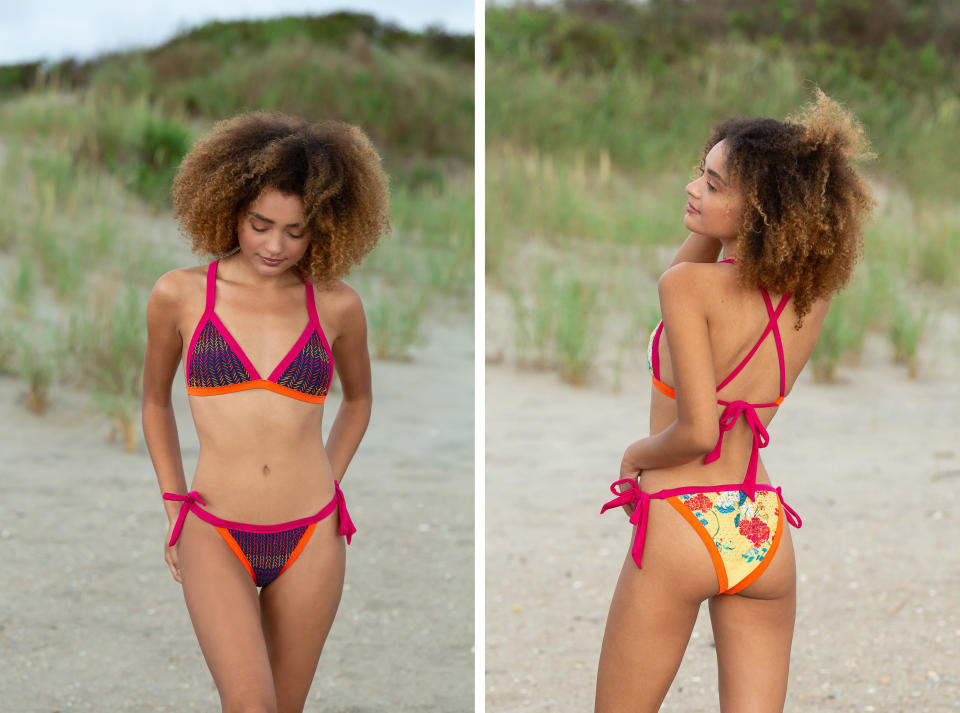
Courtesy Photo
Tommy Bahama, which sells both men’s and women’s swimwear, beachwear and lifestyle products, is emphasizing new technical attributes in its spring assortment, features that can be worn while walking the dog or jumping in a pool, such as stretch fabrics, compression liners and soft-mesh interiors.
“There’s a real push toward things that are technical or hybrids,” said Dawn Brandl, senior vice president of men’s apparel design at Tommy Bahama. She pointed to the popular Monterey Coast 9-inch model in a perforated fabric for breathability, a performance mesh liner and reflective details. “That’s been blowing out,” she said. The short is also available in a shorter 6-inch length with a trimmer body.
Even more interesting is that consumers are drifting toward separates.
“One-piece swimsuits and bikinis actually declined year-to-date, compared with 2019, while swim separates — tops and bottoms — are up,” Classi-Zummo said. “I think women are having fun mixing and matching styles and sizes and a lot of retailers and brands are offering this as an option now.”
Brands like direct-to-consumer performance swimwear brand Left On Friday, which was created by two former Lululemon executives.
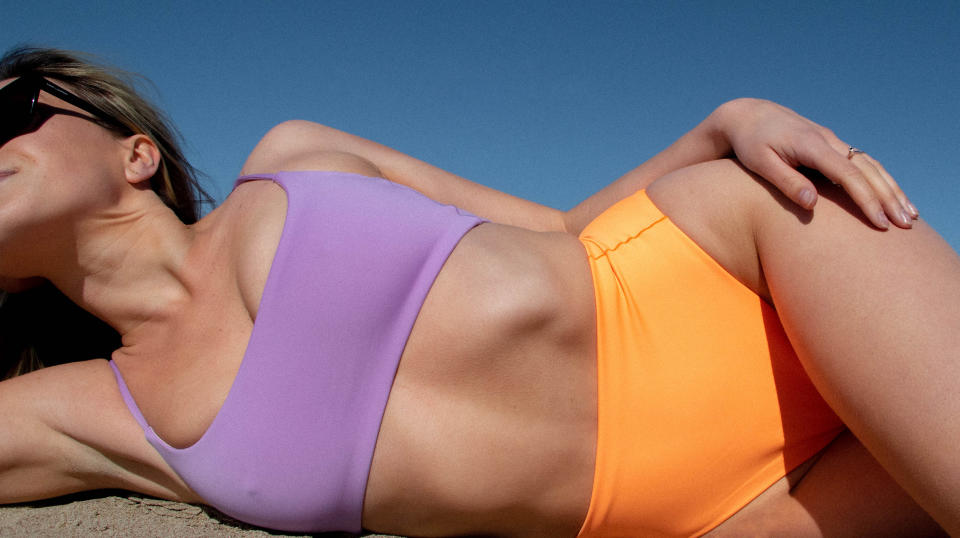
Courtesy Photo
“We showed our customer mix-and-match options and they responded really enthusiastically to it,” said Left On Friday cofounder Laura Low Ah Kee. “It was a natural evolution from our love for color and seeing how customers started to put their colors together inspired us both to continue to build on our palette. We also see customers buying one bottom, plus two tops for two different outfit options versus multiple one pieces. So naturally bikinis and separates sell in higher volume.”
There’s also bright colors, asymmetric designs, high waistlines, leopard, floral and stripe prints, ruffles, puff sleeves and lots of bows.
“There’s definitely an optimism right now and a we-kind-of-made-it-through-hell feeling, so I want to come out and feel fabulous,” said Elizabeth Taylor, founder and CEO of Curvy Beach. “We have a gold swimsuit right now, very James Bond girl, and neons are our top sellers.”
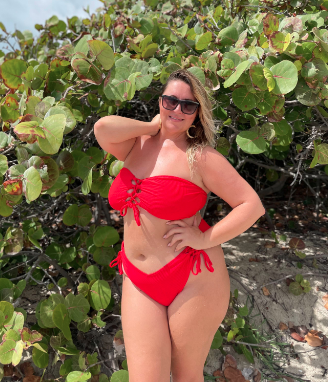
Courtesy Photo
And because it’s an Olympics year, red, white and blue options, as well as other themed collections, including Pride, are showing traction, said Brian Basye, vice president of team and specialty sales for SpeedoUSA, which is owned by Pentland, the largest shareholder in the men’s and women’s swimwear and beachwear markets globally, according to Euromonitor, although the research firm declined to detail how much share Speedo currently has.
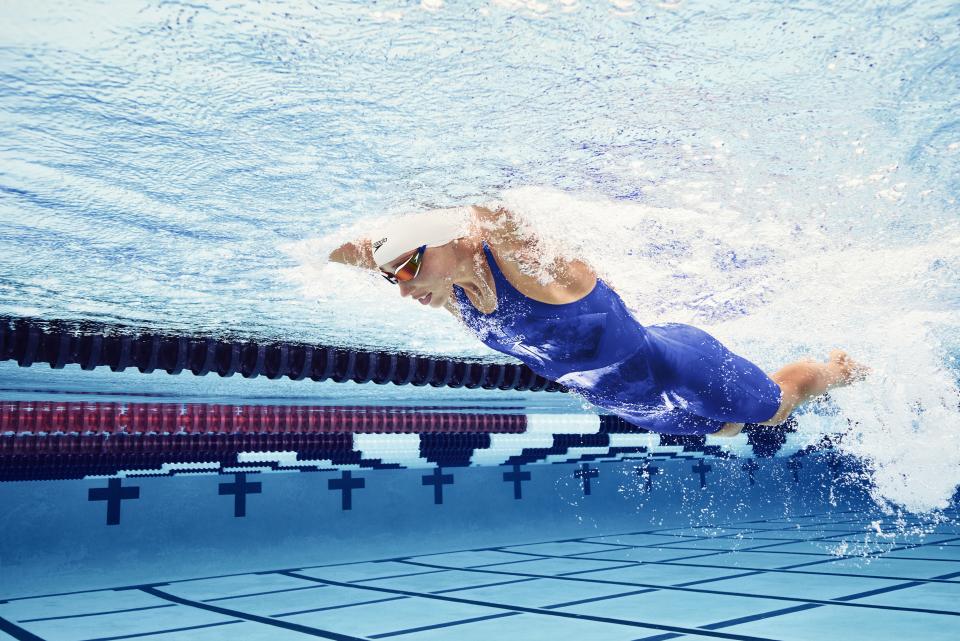
Courtesy Photo
On the men’s side, vivid colors and shorter lengths are driving growth as guys ditch their work-from-home wardrobe of sweatpants and polo shirts and head back to the beach for some fun in the sun. Trends for the upcoming season include 5-inch lengths, volley-style or square-cut trunks that can double as casual shorts and updated prints and patterns in bold colors.
Colors such as cobalt blue, orange and hues that pop are also popular. For next season, a subdued camo print in a perforated fabric and a polyester-spandex seersucker combo in a 6-inch retro cabana style are also expected to be popular, along with photoreal or watercolor prints. And of course, there will always be graphic elements, such as tiki bars or parrots on the swim trunks.
“Our [customers] come to us for humor and fun,” Brandl said.
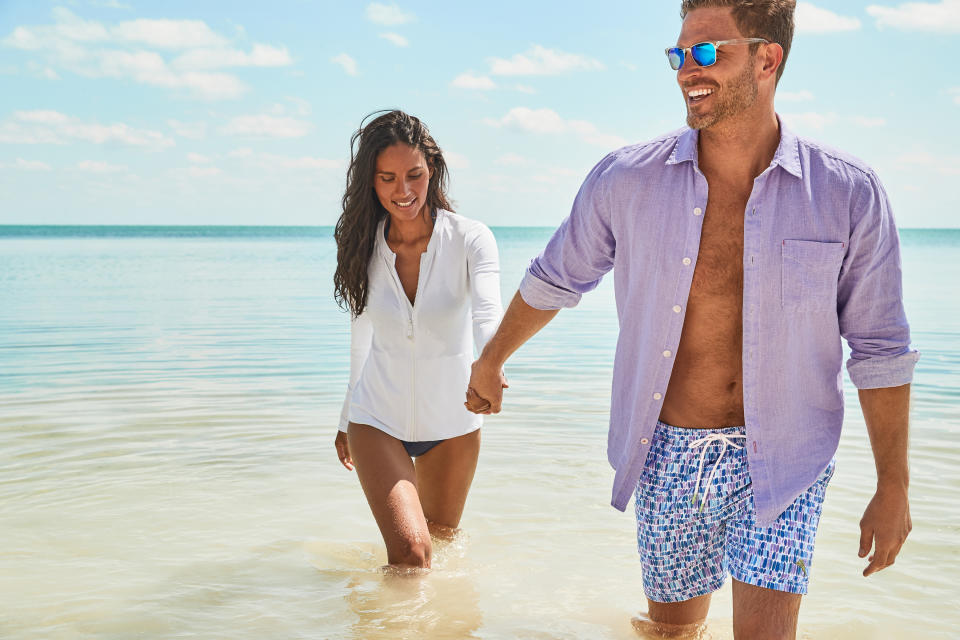
Courtesy Photo
At Orlebar Brown, best-sellers include navy and light blue swim trunks — many in shorter lengths — along with “rich floral prints,” said Adam Brown, founder of the luxury men’s swimwear brand, which is owned by Chanel. “That’s different from how our customer has traditionally shopped. They seem to be more extroverted now.”
In addition to the brand’s signature swimwear, Brown said “add-on” products, such as colorful shirts and lightweight jackets, are helping to increase business. “People are buying more than swim,” he said.
Beauty and wellness also continue to trend post-pandemic, as travel once again begins to take flight. Many times the two merge, with spa trips and exotic resorts.
“Vacationing is evolving,” Dedic Stojanovic said. “Before people used to just take some time off. But now it’s about the experience. All these experiential things bring with them a different way of traveling and a different lifestyle. And swimwear is part of that.”
Kelly Hibler, president of Nike Swim, told WWD in April that the brand is meant to be worn “in-and-around-the-water. COVID-19 has really awakened people’s desire to get back in the water,” he explained.
One example is surfing. LoveShackFancy recently launched a surfwear collaboration with Hurley, which includes an assortment of seaside accessories such as beach chairs, towels and bags with the trademark LoveShackFancy print, while Cynthia Rowley said sales of wetsuits have surged in the last year, especially among celebrities. Alo Yoga recently launched a swimwear collaboration with Frankies Bikinis. Danny Harris, cofounder and co-CEO of the brand, contends Alo Yoga is more than just a clothing company — it’s a community that exists around air, land and ocean sports, which “Alo” stands for. Even just watching swimwear events on TV during the upcoming summer Olympics in Tokyo is guaranteed to give the industry a boost.

Courtesy Photo
Of course this phenomenon applies to men’s swimwear as well. The increase in travel means many shoppers are returning to stores, oftentimes in tourist destinations.
Orlebar Brown stores in New York City, East Hampton, N.Y., Miami and a few other U.S. resort communities are doing well, Brown said.
And while Europe is slower to rebound, the business there has begun to show encouraging signs as well. “We just had our best weekend ever in Saint Tropez,” Brown said. “People are looking forward to going on holiday again and they’re enjoying buying their holiday wardrobe.”
He added that the brand’s wholesale channel remains challenged.
“Retail is still tricky; we’re not seeing the footfall,” Brown explained. “People are conditioned to shop online now. We’re definitely focused on our direct-to-consumer channels and talking differently to our customer on social media. We’re being more targeted and personalized and our content is very varied with new stories to keep driving traffic.”
Other companies, such as men’s wear brand Fair Harbor, which sells to Nordstrom and 120 or so independent specialty stores, are noticing an uptick in in-store shopping, even as e-commerce penetration continues to grow.
Brandl said Tommy Bahama shoppers are starting to return to the company’s brick-and-mortar locations. The brand is capitalizing on the increased traffic by being more aggressive in its messaging to men.
Basye said performance swimwear is getting a boost from the return of high school and collegiate sports, while recreational swimwear is on the rise thanks to warmer weather and the reopening of pools.
And anything sustainable is attracting fans.
“We know sustainability absolutely resonates with consumers,” said Classi-Zummo, referring to both the men’s and women’s markets. “And, I can tell you, quality plays a huge role in sustainability. We asked consumers, when you think of sustainable apparel, what is the number-one thing you associate it with, and the answer was quality, long-lasting. It’s that whole idea of people spending more on their swimsuits, investing in their swimsuits, also has an association with sustainability.”
Aerie, Tabacaru, Indigo Wild, Swiminista, Deta Knits, Pau Román and Whimsy and Row are just some of the women’s brands that offer swimwear made from recycled and eco-friendly fabrics.
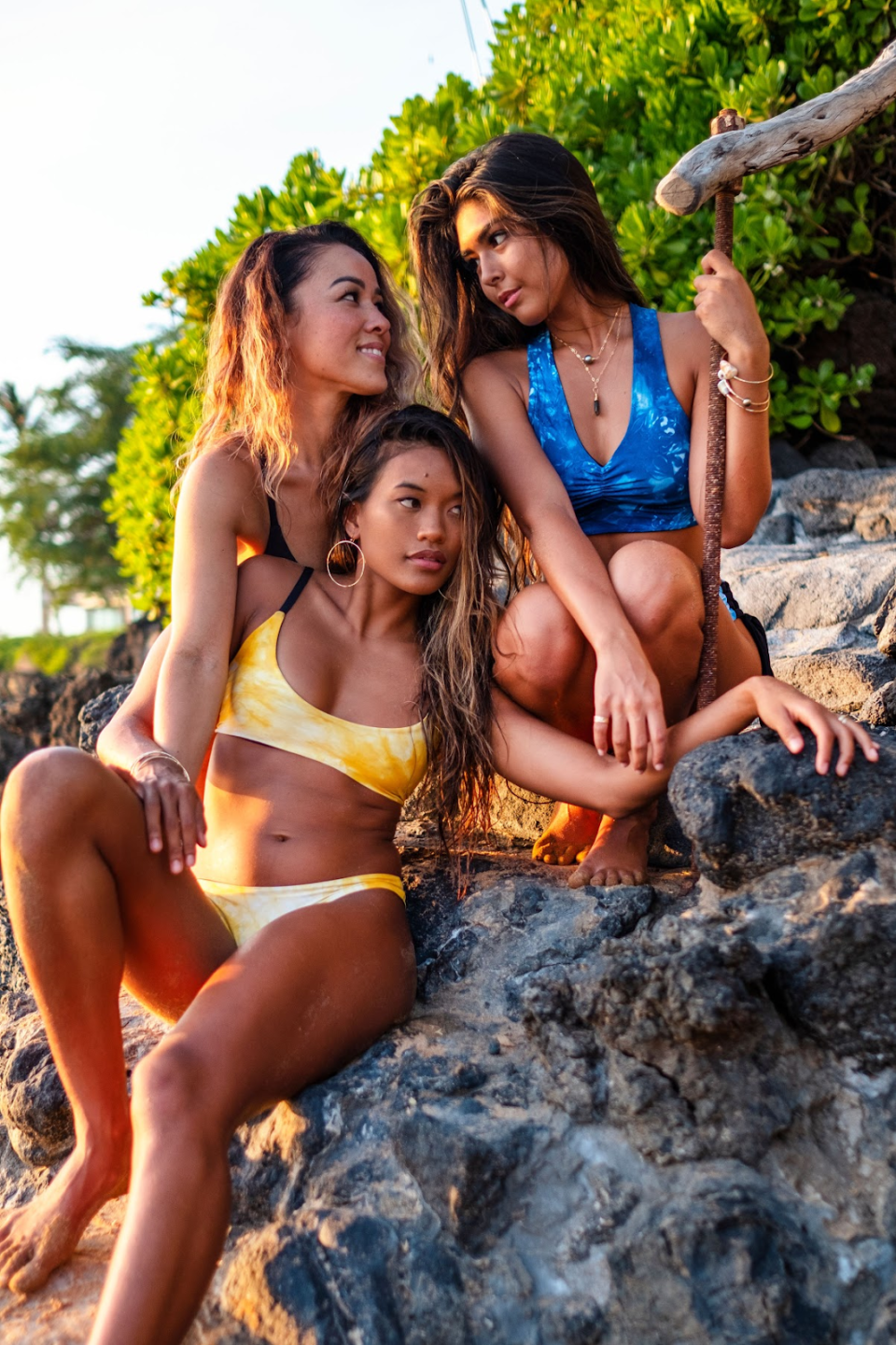
Courtesy Photo
“We’ve seen customers go from wanting a trendy bikini that will be ‘over’ by next summer to wanting something they can wear again and again, something that is classic,” Tabacaru said.
Sustainability is also popular among men.
Brandl said 85 percent of Tommy Bahama’s men’s swimwear is made from recycled polyester and 70 percent uses sustainable fibers, another key touchpoint for the brand and its customers. “It’s a win-win,” she said.
Fair Harbor, founded by siblings Caroline and Jake Danehy six years ago, is another brand reaping the benefits of sustainability. The men’s wear brand produces its collection from post-consumer recycled plastic bottles. To date, it has recycled more than 7.6 million bottles.
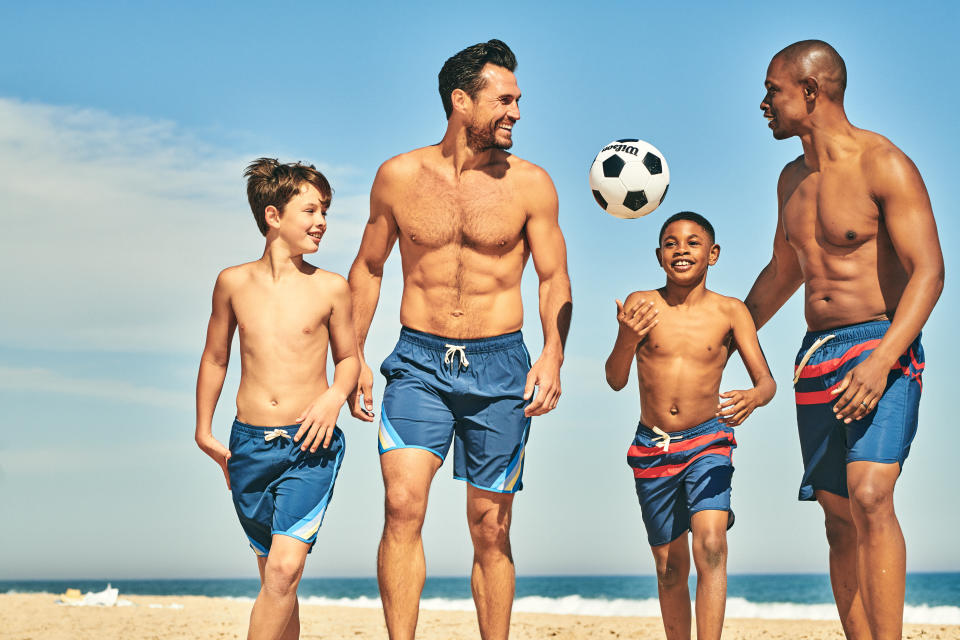
Courtesy Photo Bryan Derballa
The brand’s sustainability efforts are resonating with consumers, helping it build a community around cleaning up oceans and beaches. Once shoppers realize that Fair Harbor’s products help the environment as well as being comfortable and stylish, they become repeat customers, Jake Danehy said. Fair Harbor’s high retention rates help the brand know it’s on the right track.
Meanwhile, industry experts and retailers alike don’t see the swimwear party ending anytime soon, pointing toward the recent surge in revenues, as well as future projections, as proof of continued growth.
“Since many lockdowns and restrictions have been lifted, we are seeing an incredible recovery in our business, oftentimes double what we saw pre-pandemic,” said Roland Herlory, CEO of Vilebrequin. “And we expect a huge growth over the summer [in the European business] with borders reopening.”
Sign up for WWD's Newsletter. For the latest news, follow us on Twitter, Facebook, and Instagram.

